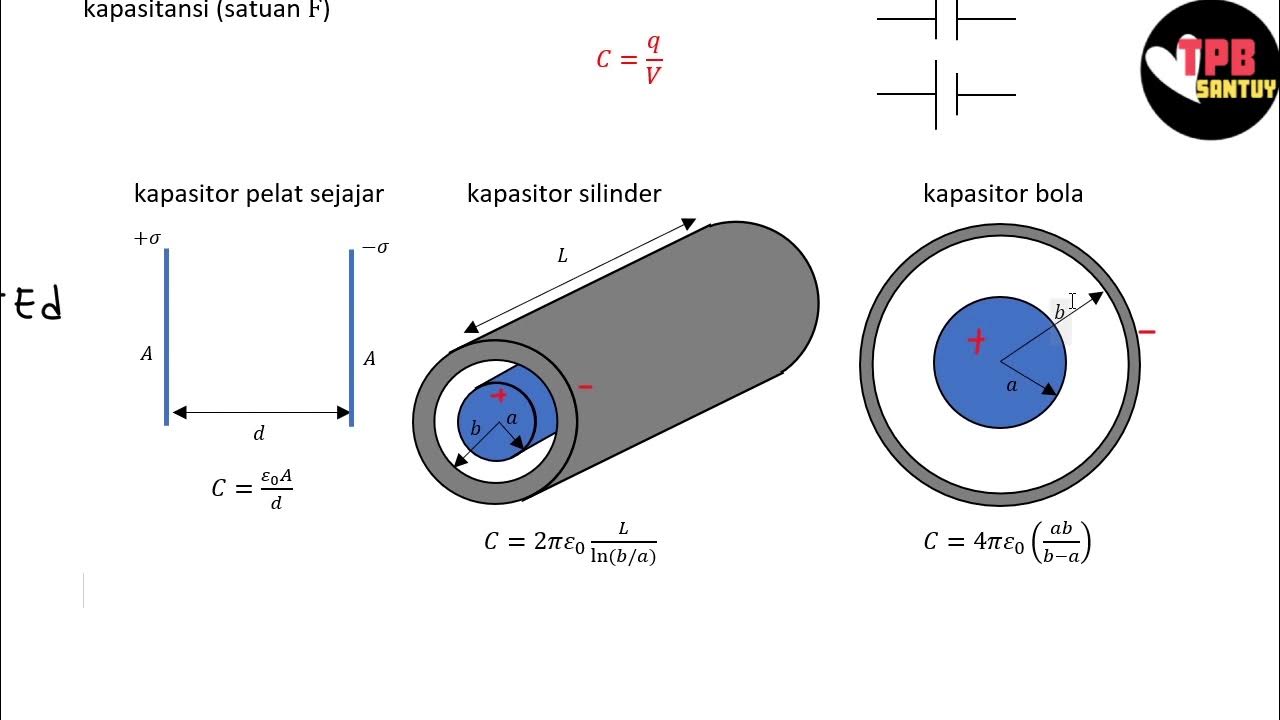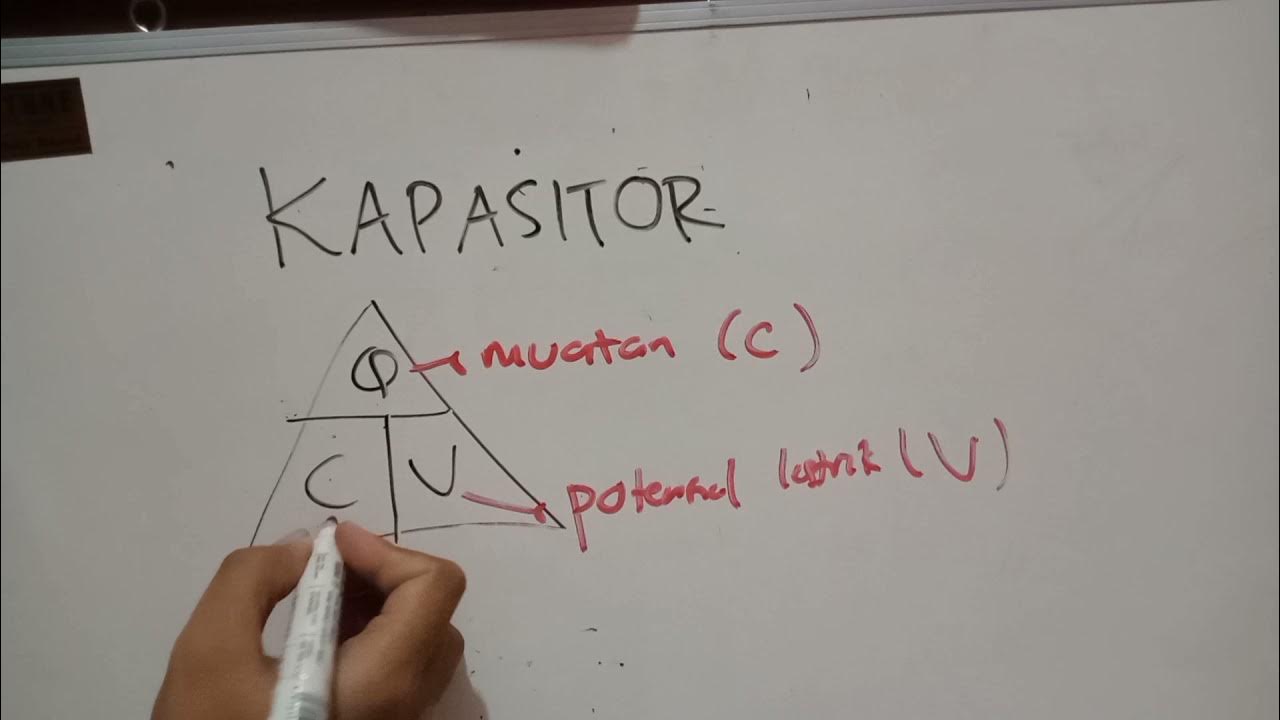What is Capacitor? What is Capacitance?
Summary
TLDRThis video explains the fundamental principles of capacitors, detailing their construction, function, and capacitance. Capacitors consist of two conductive plates separated by an insulator, enabling them to store electrical charge when connected to a battery. The charging process creates equal and opposite charges on the plates, which stabilizes once the charges accumulate. The capacitance indicates a capacitor's ability to store charge, defined by the ratio of charge to voltage. Factors influencing capacitance include the physical characteristics of the capacitor, such as plate area and separation distance, highlighting the importance of these variables in electrical applications.
Takeaways
- 😀 A capacitor consists of two conductive materials separated by an insulating material, which prevents them from touching.
- 🔋 Capacitors are used to store electrical charge when connected to a power source, like a battery.
- ⚡ The negative charges from the battery are attracted to one plate of the capacitor, while the other plate becomes positively charged.
- 📏 The capacitance of a capacitor determines how much charge it can store and is measured in coulombs per volt (C/V).
- 🧮 The formula for capacitance is C = Q/V, where Q is the charge stored and V is the voltage across the capacitor.
- 🔄 Capacitors can store equal and opposite amounts of charge on their plates, regardless of their size or shape.
- 🔄 The process of charge accumulation continues until there is no path for the charges to flow towards each other.
- 📊 Not all capacitors store the same amount of charge; their capacitance varies based on their physical characteristics.
- 📏 To change a capacitor's capacitance, adjustments must be made to the physical properties, such as the distance between the plates.
- ⚙️ The charge stored in a capacitor affects the voltage across it; as charge increases, the voltage also increases.
Q & A
What is a capacitor?
-A capacitor is an electronic component that stores electrical charge, consisting of two conductive materials separated by an insulator.
What materials are typically used in a capacitor?
-Capacitors typically contain two pieces of conducting material, such as metal, separated by an insulating material like paper.
How does a capacitor store charge?
-When connected to a battery, negative charges are attracted to the positive terminal, while positive charges are repelled by the negative terminal, leading to a build-up of opposite charges on either side of the capacitor.
What is meant by 'equal and opposite amount of charge' in capacitors?
-This means that regardless of the size or shape of the capacitor's plates, the total amount of positive charge on one plate will equal the total amount of negative charge on the other plate.
What happens to the charge in a capacitor once it is fully charged?
-Once the capacitor is fully charged, the flow of charge stops, and the stored charge remains until the circuit provides a path for it to discharge.
What determines the capacitance of a capacitor?
-The capacitance of a capacitor is determined by its physical characteristics, such as the size of the conductive plates, the distance between them, and the type of insulating material used.
How is capacitance calculated?
-Capacitance (C) is calculated using the formula C = Q/V, where Q is the charge stored (in coulombs) and V is the voltage across the capacitor (in volts).
What is the relationship between charge, voltage, and capacitance?
-The relationship indicates that for a given capacitance, increasing the charge stored in the capacitor will lead to an increase in voltage across it, and vice versa.
Can the capacitance of a capacitor be changed without altering its physical structure?
-No, the capacitance can only be changed by altering the physical characteristics of the capacitor, such as the area of the plates or the distance between them.
Why do different capacitors store different amounts of charge?
-Different capacitors can store varying amounts of charge due to differences in their capacitance, which is affected by their size, shape, and the materials used in their construction.
Outlines

Cette section est réservée aux utilisateurs payants. Améliorez votre compte pour accéder à cette section.
Améliorer maintenantMindmap

Cette section est réservée aux utilisateurs payants. Améliorez votre compte pour accéder à cette section.
Améliorer maintenantKeywords

Cette section est réservée aux utilisateurs payants. Améliorez votre compte pour accéder à cette section.
Améliorer maintenantHighlights

Cette section est réservée aux utilisateurs payants. Améliorez votre compte pour accéder à cette section.
Améliorer maintenantTranscripts

Cette section est réservée aux utilisateurs payants. Améliorez votre compte pour accéder à cette section.
Améliorer maintenantVoir Plus de Vidéos Connexes

Prinsip Kapasitor | Kapasitor | Part 1 | Fisika Dasar

Kapasitor, Simulasi Phet, Fisika kelas XII

Matriculation Physics: Capacitor and Dielectrics (Summary Part 2)

F86 - Kapasitor : Penurunan rumus kapasitansi,potensial listrik dan energi listrik

Voltage, Electric Energy, and Capacitors: Crash Course Physics #27

Capacitores - Eletrostática
5.0 / 5 (0 votes)
